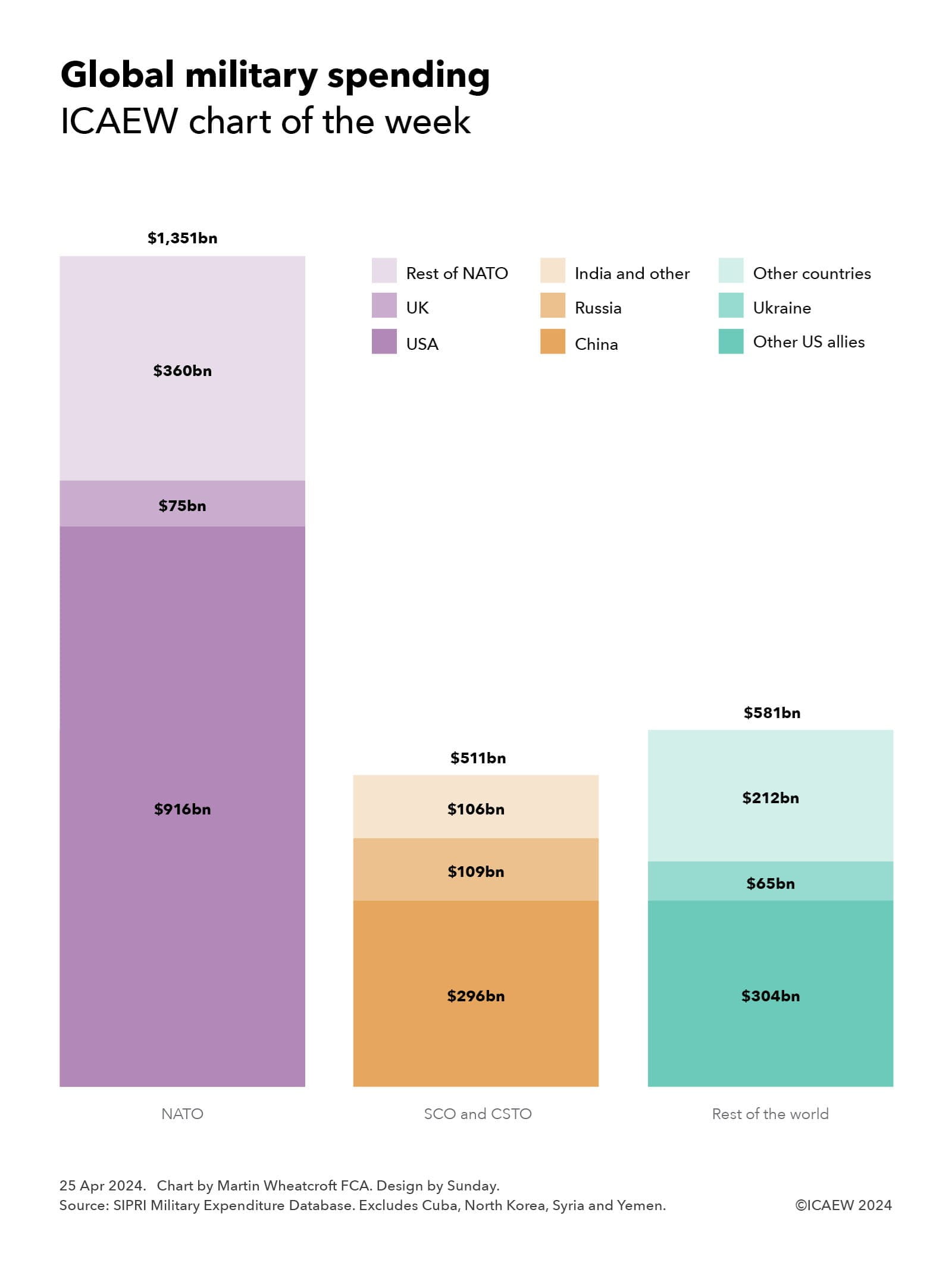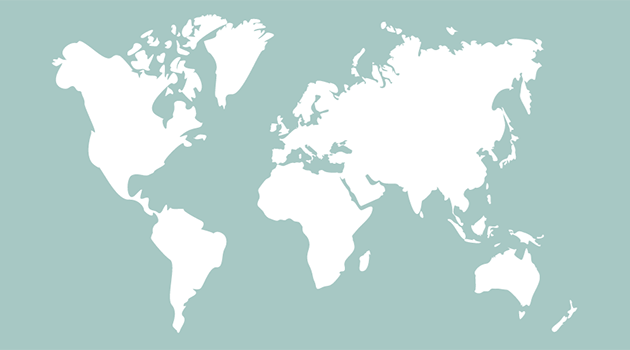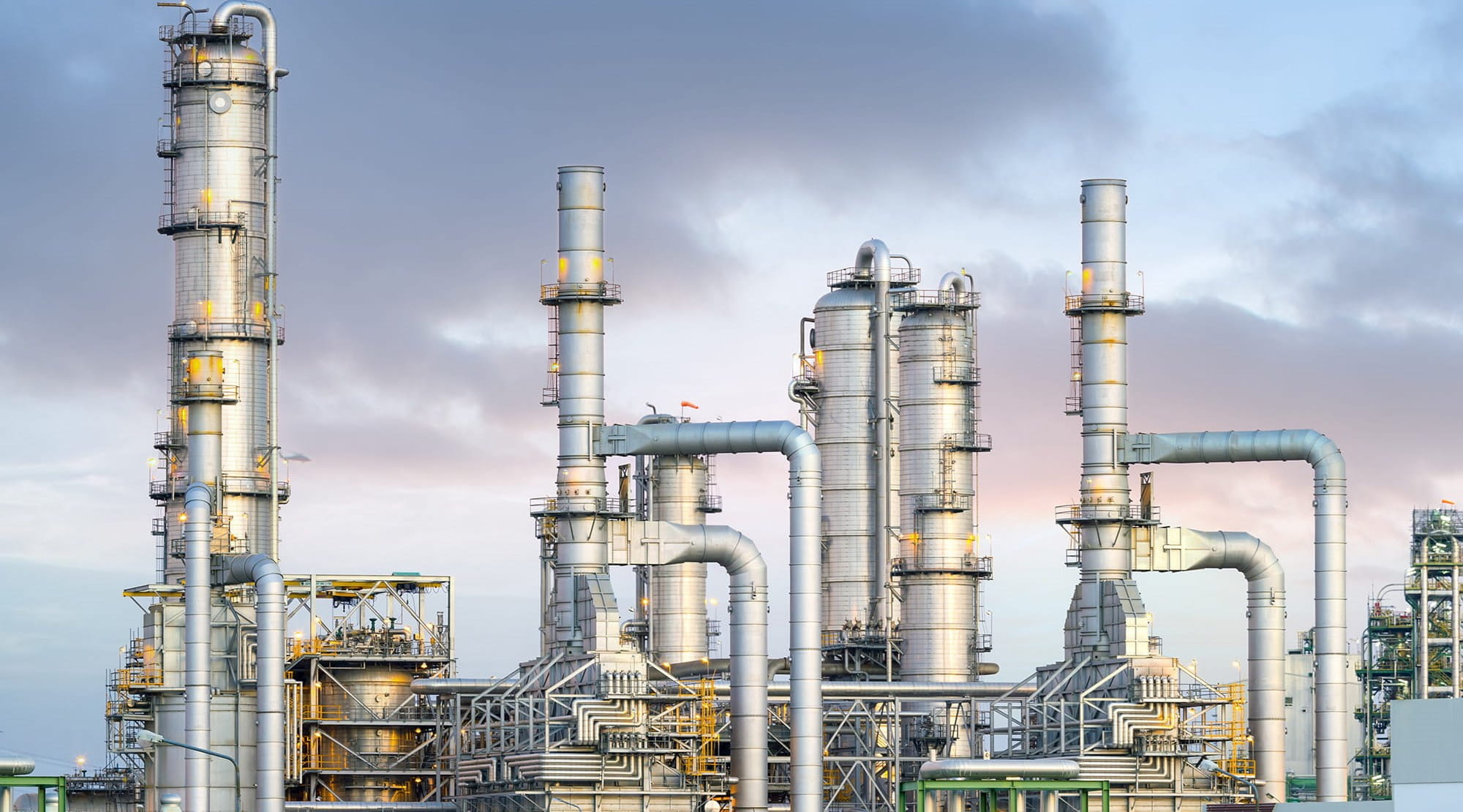
Military spending is the news this week following the announcement by the UK government that it will commit to spending 2.5% of GDP on defence and security, the recent vote by the US Congress to provide $95bn in military aid to Ukraine ($61bn), Israel ($26bn) and Taiwan and others in the Indo-Pacific ($8bn), and the release of the Stockholm International Peace Research Institute (SIPRI) Military Expenditure Database for 2023.
Our chart this week is based on the latter, with SIPRI reporting that global military expenditure has increased to $2,443bn in 2023, a 6.8% increase after adjusting for currency movements. SIPRI’s numbers are based on publicly available information, which means that some countries may be spending even more on their militaries that are included in the database. SIPRI was unable to obtain numbers for military spending by Cuba, North Korea, Syria, Yemen, Turkmenistan, Uzbekistan, Somalia, Eritrea, Djibouti, and Laos.
More than half of that spending is incurred by NATO, with total military spending of $1,351bn, comprising $916bn by the US, $75bn by the UK and $360bn by other NATO members. Of the latter, $307bn was spent by the 23 members of the EU that are also members of NATO (including $67bn by Germany, $61bn by France, $36bn by Italy, $32bn by Poland and $24bn by Spain), while $53bn was spent by the other seven members (including $27bn by Canada and $16bn by Türkiye).
The Shanghai Cooperation Organisation (SCO) and the Collective Security Treaty Organisation (CSTO) are partially overlapping economic and military alliances convened by China and Russia respectively. China has the biggest military with $296bn spent in 2023, while Russia spent $109bn and other members spent $106bn (of which India spent $84bn).
We have categorised the rest of the world between other US allies which spent $304bn in 2023 (including $76bn by Saudi Arabia, $50bn by non-US members of the Rio Pact, $50bn by Japan, $48bn by South Korea, $32bn by Australia, $27bn by Israel and $17bn by Taiwan), Ukraine which spent $65bn, and $212bn spent by other countries for which SIPRI has data.
The numbers do not take account of the differences in purchasing power, particularly on salaries. That means China and India, for example, can employ many more soldiers, sailors and aircrew than NATO countries can for the same amount of money.
The Ukraine number also excludes $35bn in military spending funded by the US ($25bn) and other partners ($10bn) during 2023 that was not part of its national budget.
Global military spending is expected to increase further in 2024 as the international security situation deteriorates. This includes NATO members that plan to increase their defence and security spending to meet or exceed the 2% of GDP NATO minimum guideline set in 2014 to be achieved by 2024.
This includes the UK, which now plans to increase its spending on defence and security from 2.35% of GDP in 2023/24 to 2.5% of GDP by 2028/29, with suggestions from defence sources that setting a target of 3% of GDP may be necessary at some point in the next decade.



